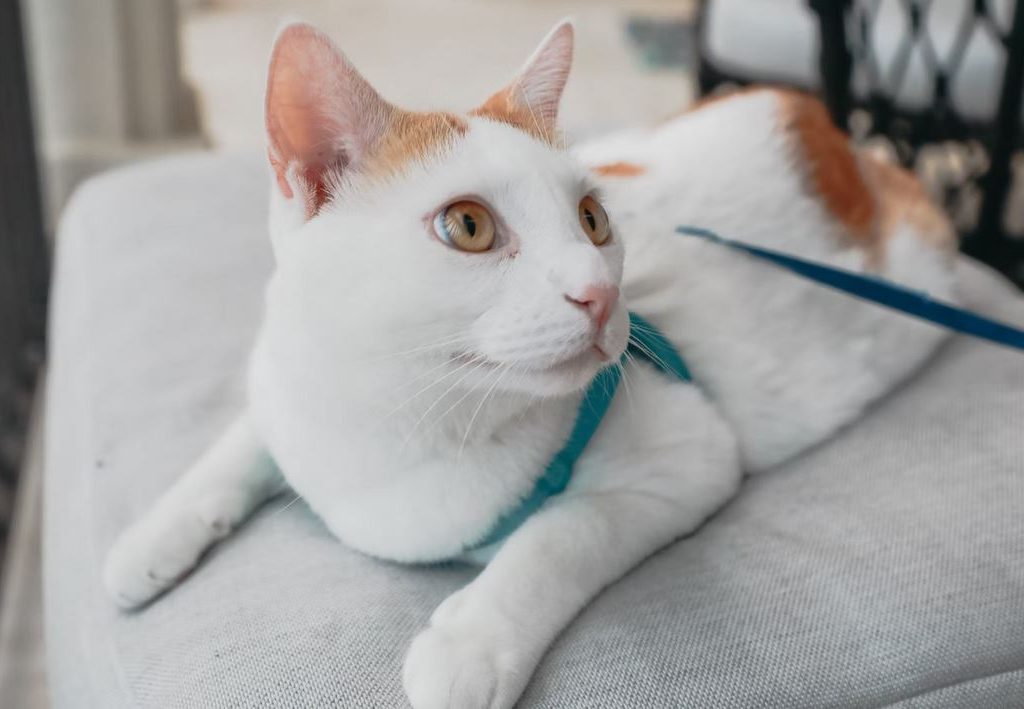
If you have an indoor cat then you might like to train your cat to walk on a leash. Lets take a look at how to leash train a cat. This opens up a whole new outdoor world for them to explore. Going on an adventure outside is also really good exercise for your cat. It can alleviate boredom from being inside all day every day. There are so many new things to see, new smells, and experiences. Not only is exploring outside wonderful exercise, leash training makes traveling and trips to the vet so much easier.
Most cats can be trained to walk on a leash although some cats take to it better than others. It’s not for every cat though, some cats may never be happy walking on a leash, and if yours is one of those who don’t like it, then you should never force them. Just be creative with new indoor adventures for them. It’s easiest to leash train a kitten, they’re at a stage where they are most accepting of new concepts and experiences.
If you’ve decided your cat will love leash training and new outdoor adventures, then now is the time to introduce the harness. Let them sniff it and get used to having it near by. Ensure your cat associates the harness with positive experiences, and treats are a great way to do this.
How to Leash Train a Cat
Mealtime is a great time of the day to slip the harness on, while your cat is distracted by food, or treats. Leave the harness on loosely for a while so they get used to the feeling of the harness. After a few minutes, take it off, and repeat this every day for a number of days. Gradually increase the time that your cat is wearing the harness. Remember the treats! Give the treats to your cat only when they are wearing the harness, not when it is off. Treats and rewards are the key!

Getting Your Cat Accustomed to the Harness and Leash
It could take days or weeks to get your cat used to a harness. Don’t rush this step. Attach the leash, make sure it won’t get caught up on anything in the room. You can let the leash drag behind your cat, or follow them holding onto the leash. Remember – treats and rewards. You’ll need to do this for a number of days or perhaps even weeks inside the house in safe rooms. For leash training to be successful, patience is a must and it’s far better not to rush the process. Allow your cat to get used to the feeling of a bit of tension on the leash. Again, treats and rewards. Always make sure you’re supervising your cat with the harness and leash on. Never leave them alone wearing a harness or leash. As your cat becomes accustomed to walking on the leash, you could try to guide them. With a little pressure on the leash pulling towards you, call them to you. If they move towards you, reward them.
How to Leash Train a Cat When They’re Still a Kitten
The process of training a kitten is much the same as for older cats. You’ll likely find your kitten adapts much faster to wearing a harness. Be sure to select an appropriate sized harness. Pet stores such as Animates sell harnesses that will fit kittens.
Taking Your Cat Outside on a Harness
Ensure it’s a nice day outside, not many cats like the rain and a nice sunny day is better for you too!
Carry your cat outside. This is vitally important for an indoors cat, as you don’t want them to get into a habit of rushing out the door whenever they see it open. Teach them that they are allowed to go outside only when they are carried out the door. Set you cat down in a safe area of the yard, preferably closer to the door of the house you’ve just left. Ensure there is nothing around to startle them, and let them begin to explore at their own pace. Be prepared, if your cat does get a fright they’ll want to run, so keep a good hold on the leash. If this happens and you attempt to pick up your cat it may be worth having a towel to wrap them in to avoid sharp claws. Keep the leash loose and follow along behind them. A few minutes at a time will be enough in the beginning otherwise it can be overwhelming for a cat that’s not accustomed to being outside.
Slowly increase the time and distance
Your cat may be more than happy just exploring outside in your backyard. However, if you and your cat have taken well to walking on a leash you both may decide you’d like to explore further afield. Again, take your time with this and remember the treats and rewards.
Given time, most cats can be trained to walk on a leash. Click here for more about how to leash train a cat. You might like to try teaching your cat a few basic tricks. Check out what I discovered about training cats here.









